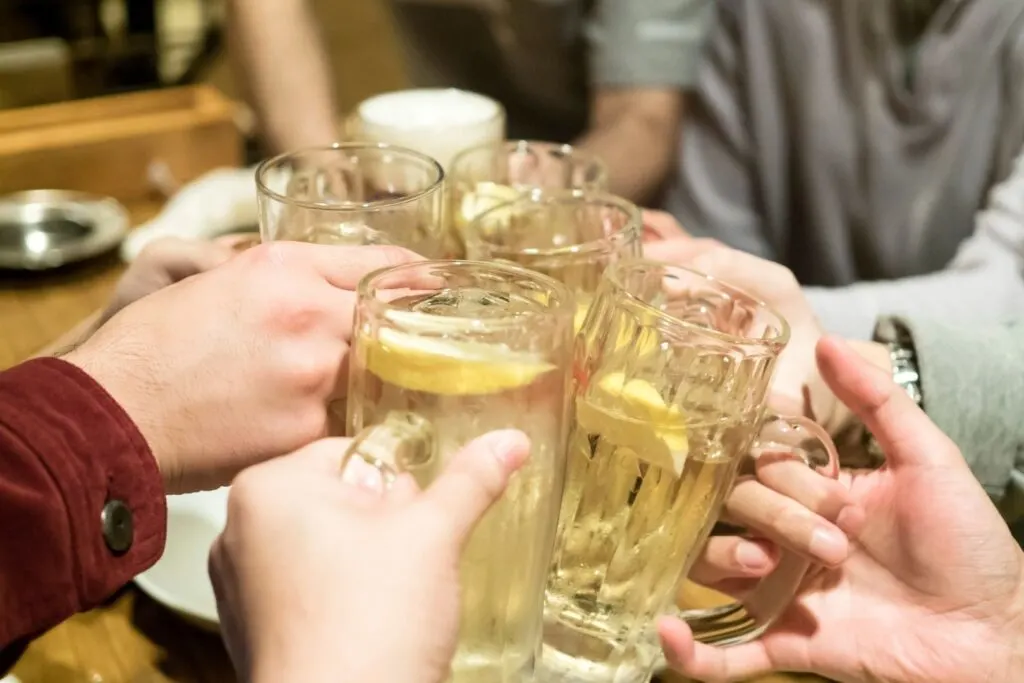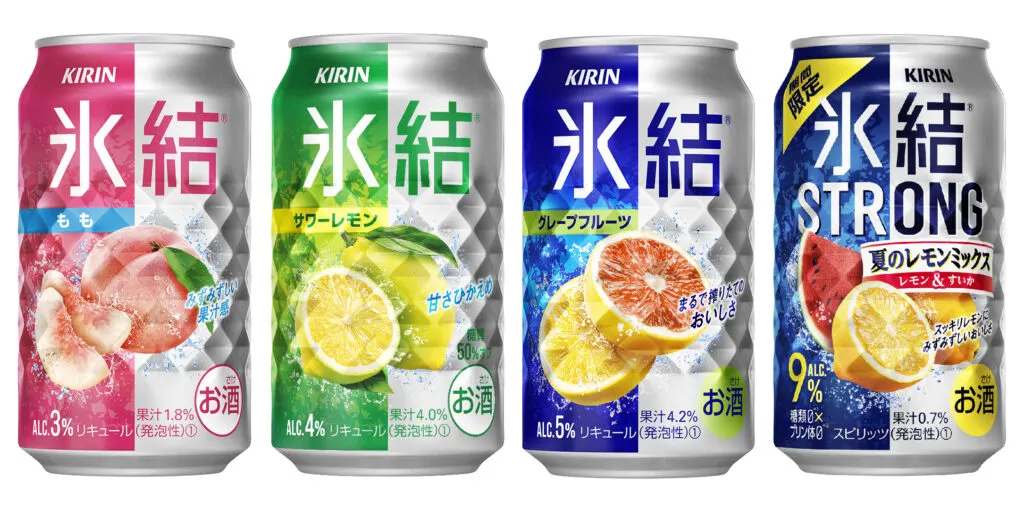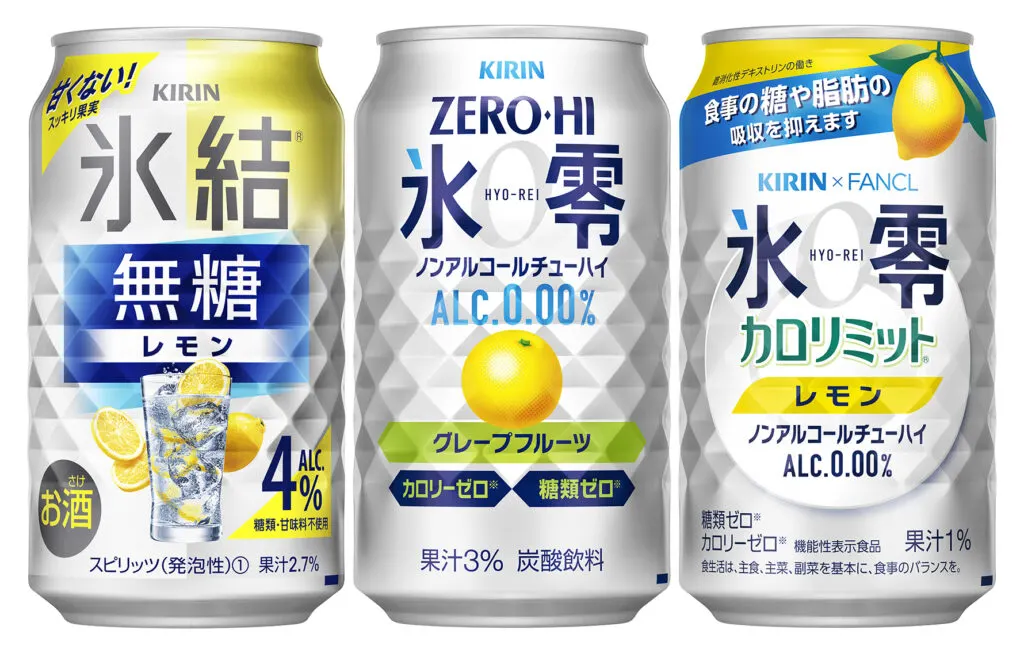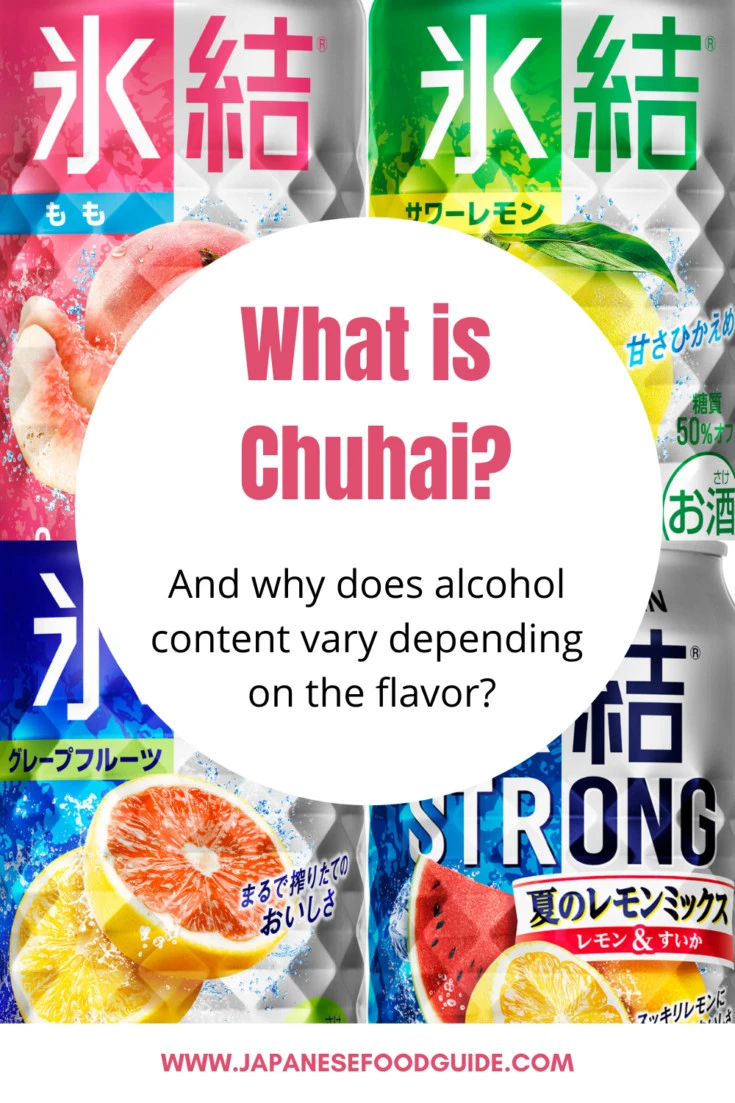Chuhai is a Japanese alcoholic beverage that you’ll no doubt see on bar menus and as a popular drink option in canned form at supermarkets, convenience stores and summer festivals. Despite its popularity, it’s one of those mysterious drinks that everyone knows yet putting a finger on what actually constitutes one is another thing entirely.
In this article, we’ll demystify what a chuhai is, how it was invented, and why what flavor of canned chuhai you choose dictates the amount of alcohol in it.
Table of Contents
What is chuhai?
Chuhai (チューハイ or 酎ハイ), which you also see written in roman letters as chu hi, chuhi and chu-hi, is a mixed drink that appeared in Japan after the second World War, when alcohol was in short supply. The name is an amalgamation of the Japanese word shōchu (a distilled spirit) and the English word “highball.” As in the cocktail.
In post-war Japan, whiskey was truly a luxury so most drinkers had to settle for shochu, an inexpensive spirit that can be distilled from just about anything you might have lying around your kitchen.
Sweet potatoes are common as the base ingredient, but the legal definition permits the use of wheat, barley, brown sugar, buckwheat, sesame, chestnuts and even milk. Shochu can also be made from rice, but the process is different from that used to make sake and the finished product comes out stronger and less fruity.
In the last ten or 15 years, shochu has gotten trendy and is often of high quality. But in the chaotic post-war period it was usually foul-tasting hooch of dubious origin. To make it go down easier, street stalls and saloons started mixing it with soda water and calling it a “shochu highball,” or “chuhai” for short. The concoction spread quickly, with variations made by adding fruit juice, flavored syrup or tea.

Chuhai’s modern reinvention
The first packaged chuhai product to retail in stores (rather than bars) was released in 1983 by a company called Toyo Jozo, with the catchy brand name of “hiLicky.” (Later, the company merged with Asahi Breweries and the can now reads “hiLiki.”)
It was a big hit with young people, and the success of the product encouraged other manufacturers to enter the market with their own canned and bottled versions.
These days, chuhai has matured into a 1.3 million kiloliter-per-year product, having nearly doubled in sales over just the last six years. That’s still only a quarter of the beer market, but chuhai is gaining steadily and, among consumers in their twenties, chuhai has elbowed aside beer as the preferred drink.
The irony is that the best-selling canned chuhai, Kirin’s “Hyoketsu” brand, doesn’t even contain shochu; it’s made with vodka. There’s no legal or industry standard for what constitutes a “chuhai,” so the formula varies depending on who’s making it. The only things all chuhai have in common is that they are based on some kind of distilled spirits and, in the case of packaged products – which are known in the industry as “ready to drink” or RTD – contain less than 10 percent alcohol.
Anything higher will trigger a higher tax rate, something manufacturers want to avoid because a major selling point of chuhai is that it’s cheaper than beer. (The average retail price of a 350-ml can of chuhai is 156 yen, while a comparable container of beer will set you back well over 200 yen. That’s partially because beer is taxed at a higher rate.)
Why is the alcohol content in chuhai different depending on the flavor?
Venture into the alcohol aisle of any Japanese supermarket or convenience store and you’ll find a bewildering array of canned chuhai products. Sorting out the differences can be challenging, particularly if you don’t read Japanese, but be sure to pay attention to the alcohol content so you don’t get more (or less) than you’re bargaining for.
Fortunately, that’s easy to do because alcohol content is labeled prominently on the front of the can, stated as a percentage and usually preceded by the letters ALC for “alcohol.”
If you look carefully, you may notice that alcohol content varies not only by product but even within brands, depending on which flavor you select. Kirin’s “Hyoketsu” peach chuhai, for example, contains 3 percent alcohol. But the grapefruit version – same brand, same price —packs considerably more punch at 5 percent. I was so puzzled by this that I called up the company to ask why.

A company representative explained there are two reasons why alcohol content varies by flavor. The first, and most important reason, is taste. Strong citrus flavors, like lemon and grapefruit, go well with alcohol and demand a higher alcohol content for balance. The company does make citrus flavors with lower alcohol content (like the sour lemon above), but most drinkers, and men in particular, prefer the higher alcohol versions.
Meanwhile, the so-called “soft fruit” flavors, which includes grape, apple, and peach, are less assertive and would taste too strong with higher levels of alcohol. And customers who gravitate to these flavors, usually women, generally prefer a drink that doesn’t hit them as fast. But most consumers regard higher-alcohol products as better value because they deliver more kick per can.
What the industry terms “standard” chuhai (5 percent alcohol) and “high-alcohol” chuhai (7 to 9 percent) together account for more than 80 percent of the market.
Zeroing in on the health-conscious consumer
At the same time, demand is growing for RTD chuhai beverages targeted to the health-conscious consumer. An increasing number of packaged chuhai products contain less than 1 percent alcohol, or – in yet another irony considering the origins of chuhai — no alcohol at all.
Although zero-alcohol chuhai are technically classified as soft drinks, sales to minors are prohibited (lest the products serve as a gateway to underage drinking), and the flavor profiles are decidedly adult, containing bitter compounds and alcohol-like aromas.

Where to drink chuhai like old times
Working through all the flavors and variations can be a lot of fun, but why not go on a search for an authentic old-time chuhai as they were made in the immediate postwar period? For that, you’ll need to search out the simplest sort of drinkery in Japan.

These modest and unassuming shops may be identified with a sign reading taishū sakaba (大衆酒場) or simply sakaba (酒場), terms that could be translated as “gin mill” or “public house,” depending where you’re from. They are easiest to find down back alleys in working-class neighborhoods untouched by gentrification.
Although lots of bars offer what’s called a ganso (original) chuhai, why not head straight to the source — the area in eastern Tokyo along the Keisei train lines, which is supposedly where chuhai originated? A good place to start might be Sanyu Sakaba (Yahiro 2-2-12, Sumida-ku; [03] 3610-0793) near Keisei Hikibune Station on the Keisei Line. It’s one of three or four drinking dens that claim to have invented the chuhai and has a great atmosphere.
Have you tried chuhai before? Had you ever noticed that the alcohol content per can was different depending on the flavor?
Pin me for later

Alice Gordenker is a Tokyo-based writer. She started her career in journalism reporting from Washington, DC for food industry trade publications on regulation and legislation. Since relocating to Tokyo more than 20 years ago, Alice has made it her “life work” to provide insight on Japan through various media including newspapers, magazines, television and film.
She is delighted to be an early contributor to Japanese Food Guide, where she can once again focus on great things to eat, and how they are grown or made.
